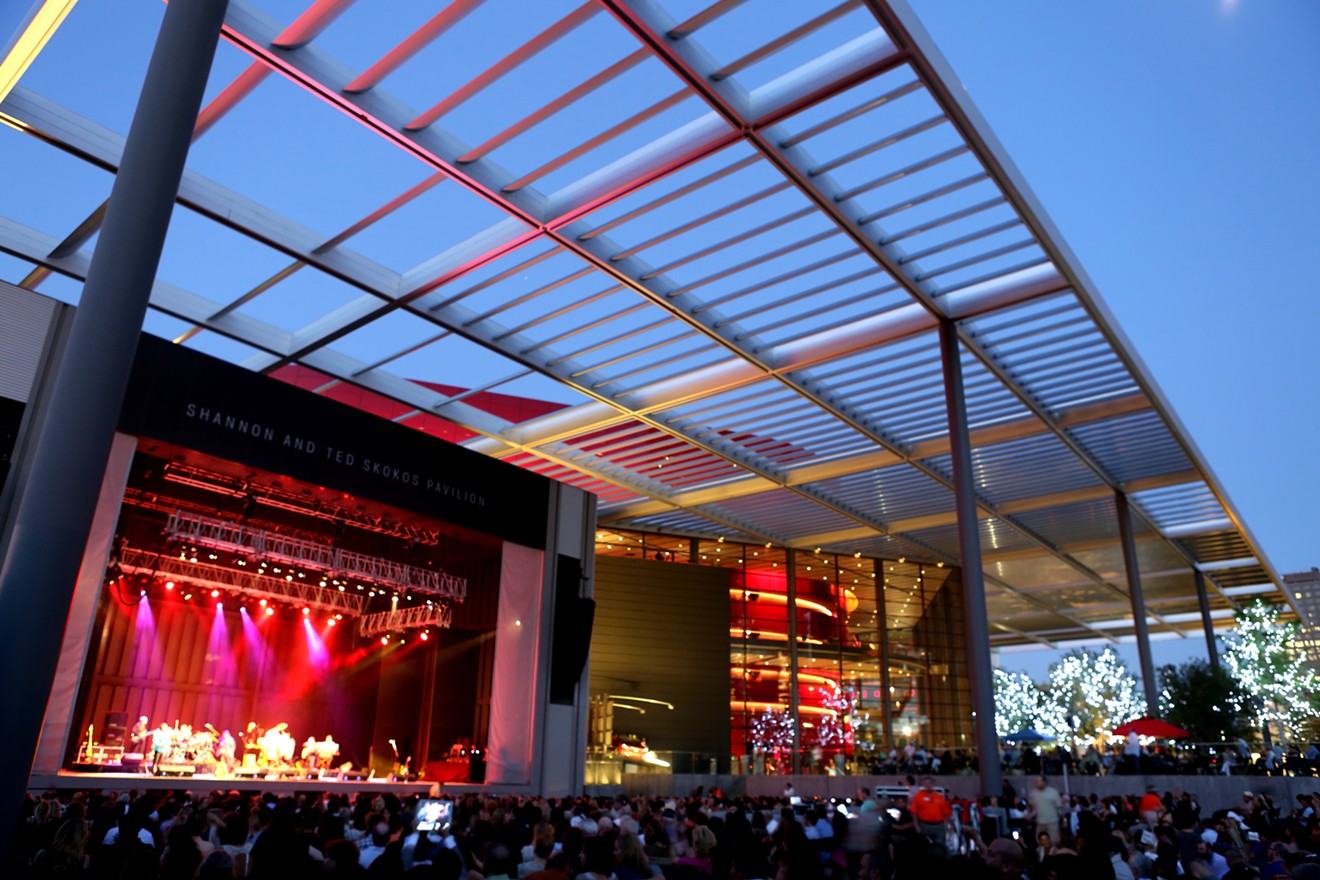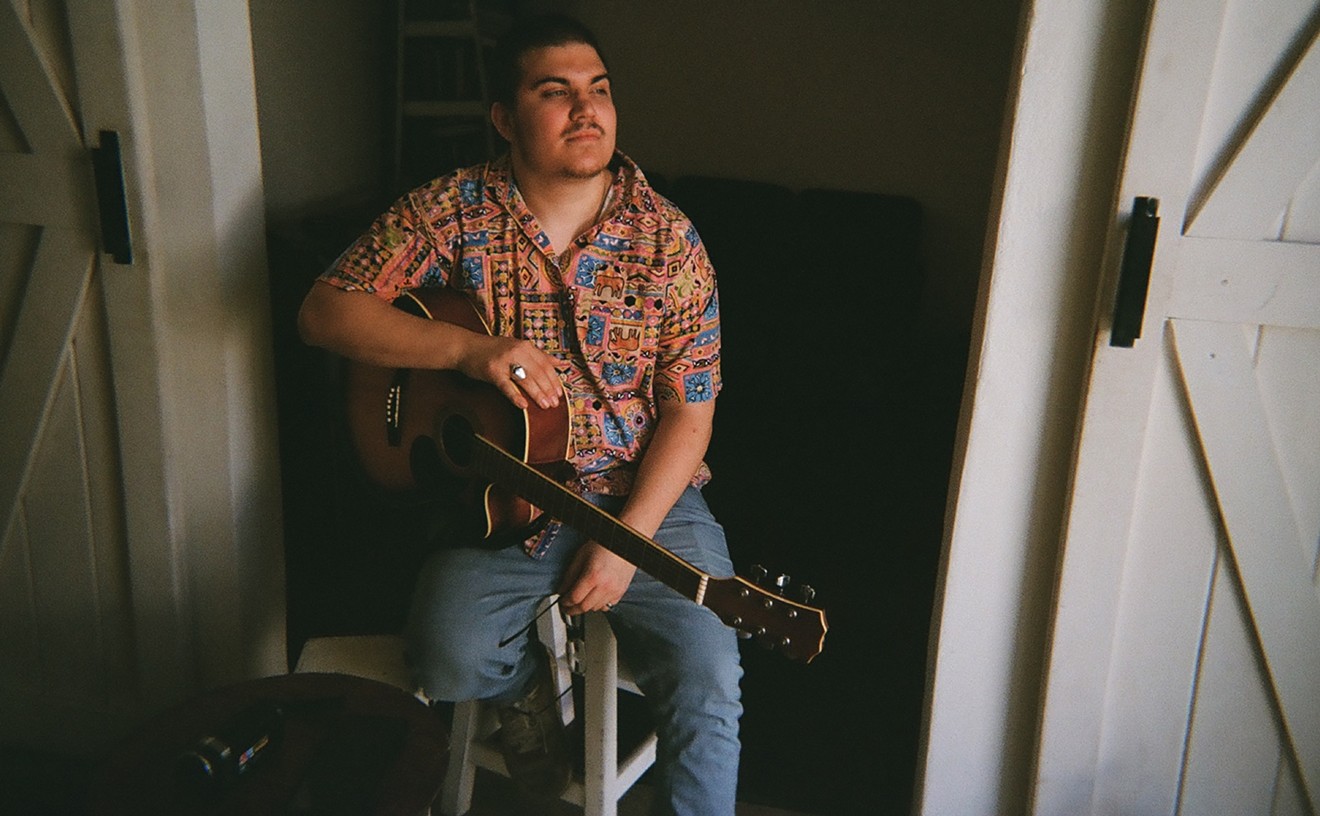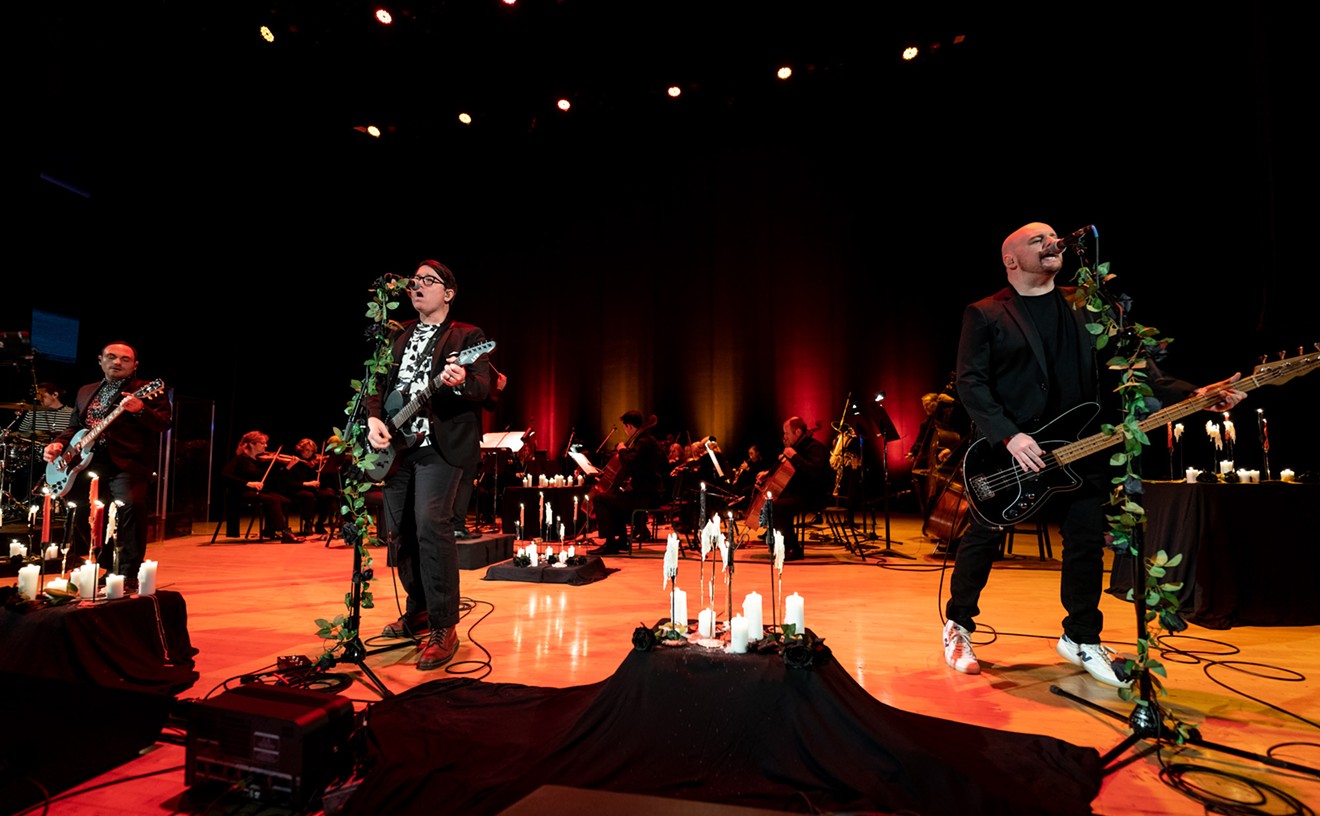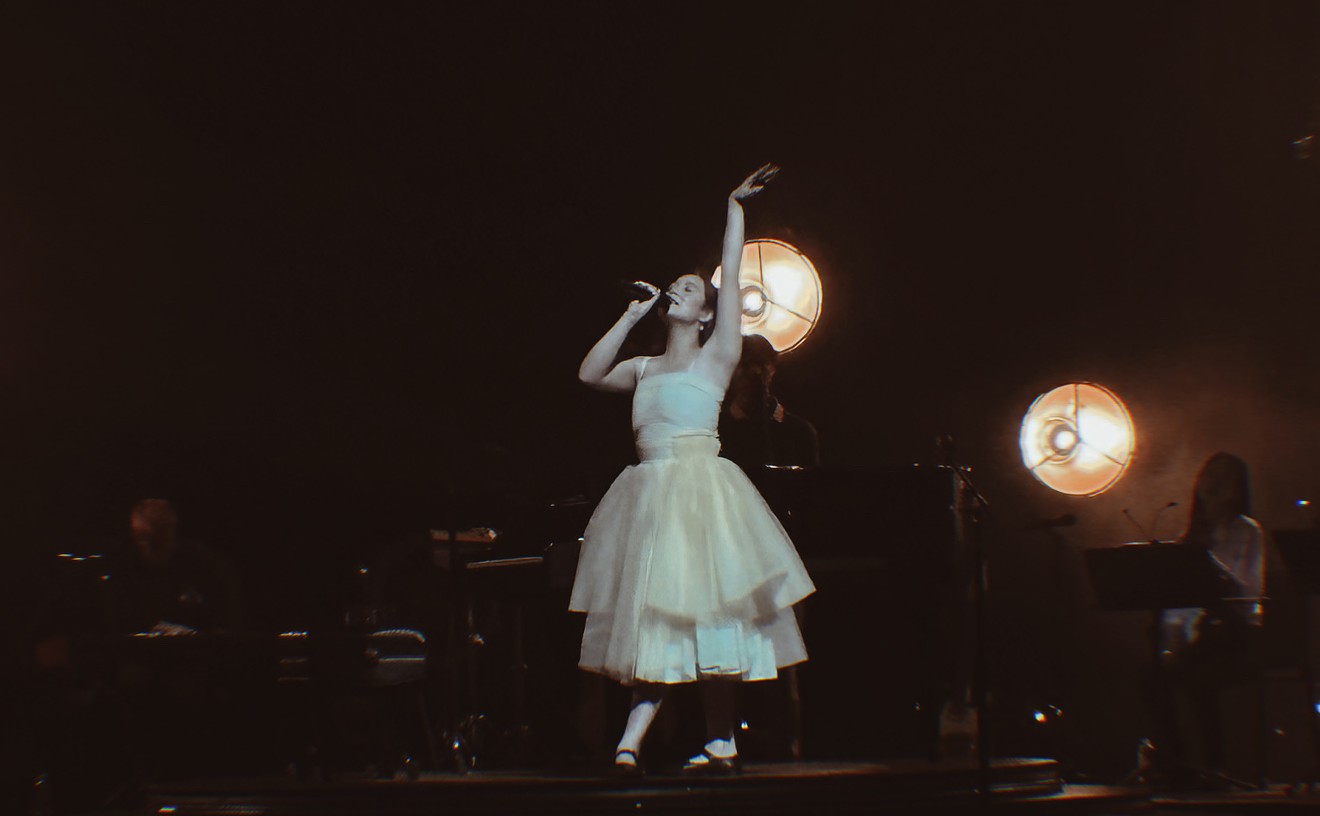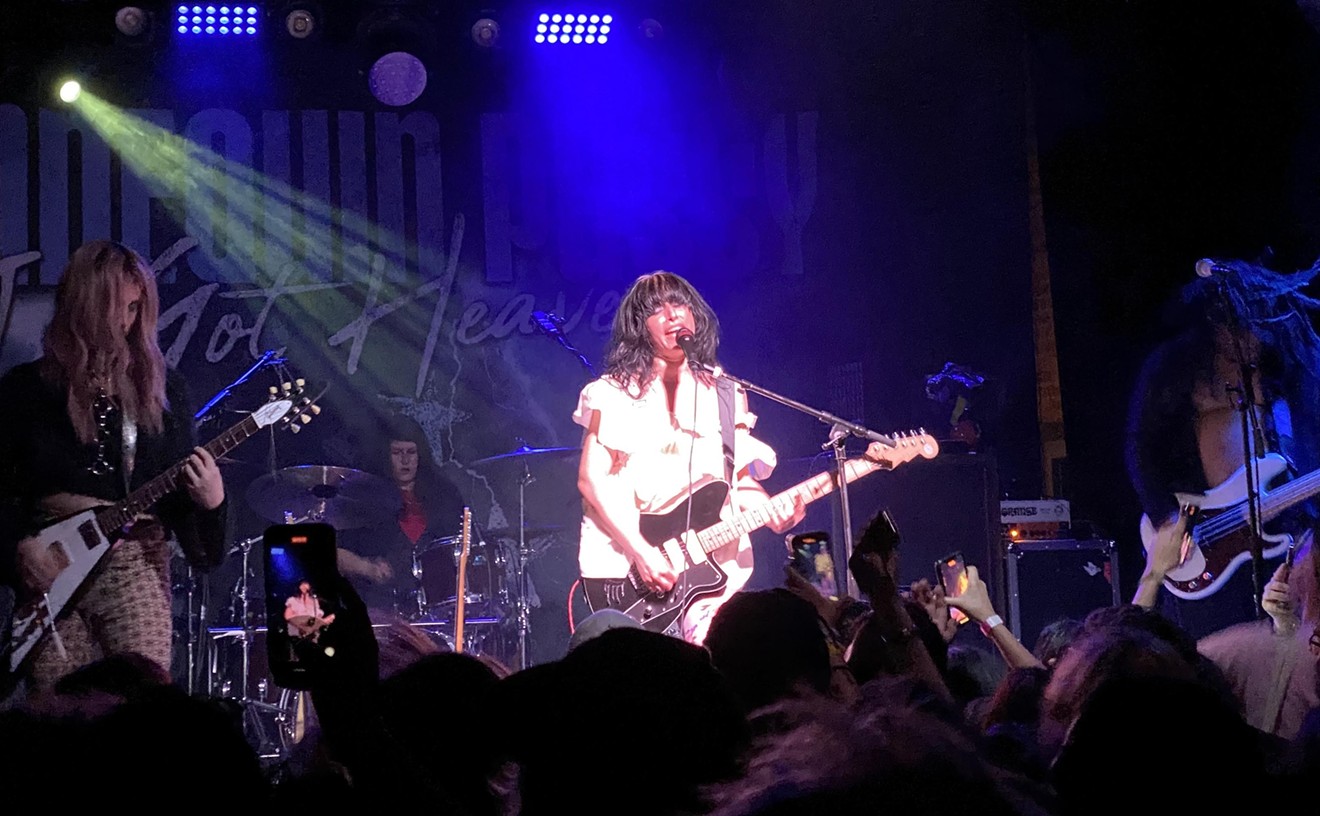The 2003 Dallas bond program set aside $8.8 million to renovate and improve what was then known as the Annette Strauss Artist Square. Now the 2,400-capacity outdoor venue sits unused most of the year; as of press date there are only two performances scheduled between March 13 and July.
The amphitheater — adjacent to the Winspear Opera House, which sits on its original location — takes its name from Dallas’ second female mayor and champion of the downtown Arts District. It spends most of its time dark due to issues of sound bleeding into the nearby Morton H. Meyerson Symphony Center, a building whose opening was overseen by Strauss herself during her time in office.
“Back when Strauss Square was built, the symphony was worried about sound leaking in so they demanded an agreement that Strauss Square wouldn’t be able to perform on nights when they had performances or they had rehearsals,” Chris Heinbaugh, vice president of external affairs for ATTPAC, told the Observer. “That was part of the city’s bond contribution, was to build Strauss Square. It almost never gets used.”
This agreement, which Heinbaugh says dramatically affects the ability for the venue to book shows during the months outdoor venues are most viable, requires that the venue not use its sound system during the Dallas Symphony Orchestra’s Classical and Pops series. Former Dallas City Manager Mary Suhm negotiated the agreement between executives of ATTPAC, then known as the Dallas Performing Arts Center, and the Dallas Symphony Association, parent company of the DSO.
“It’s [a] reasonable but strict booking policy for the Annette Strauss venue and this is one of the things that Chris Heinbaugh has had to deal with and nettles him, and I understand, because the agreement gives the symphony certain protections,” says Les Studdard, general manager of the Meyerson Center. “I understand Chris’ frustrations, because ATTPAC is charged with making that venue profitable and we interfere with that through that agreement in that they don’t have 365 days a year they can sell to promoters.”
Heinbaugh’s frustrations are centered on what he sees as deteriorating seals at the Meyerson Center, which is one of many cultural buildings, streets, bridges and city-owned buildings that suffered from deferred maintenance during the recession that affected most of the late 2000s and early 2010s. Despite the Meyerson’s leaking roof and antiquated light and security systems, the true cause of the problem has nothing to do with structural wear and tear.
“That doesn’t have anything to do with maintenance or deterioration or anything, that’s just the design of the building,” says David Fisher, interim director of the Dallas Office of Cultural Affairs. “It wasn’t designed to have a concert venue pointed right at it.”
The Meyerson, designed by renowned architect I. M. Pei and opened in 1989, is considered to be one of the world’s greatest orchestra halls. Part of its structure includes a large glass window near the north end of the Meyerson that was too large to be double paned as 27 other windows on the north side of the center were, Studdard says.
“There are some design elements that are kind of the building’s Achilles’ heel, and those things are not in a poor state of repair,” Studdard said. “Back before the Annette Strauss building opened the city spent about $250,000 to $300,000 to double pane 27 windows on the north side of the building, but it would have cost a fortune to do something with the very large window.”
Additionally, new doors and seals were installed at the Meyerson before the opening of the new Strauss Square, however this “Achilles’ heel” at the Meyerson is parallel to the stage at Strauss Square, meaning that the possibility of sound interference has been an issue since the groundbreaking in 2008, when the Annette Strauss Artist Square was repositioned and rebuilt.
According to a Dallas Morning News article published in 2008: “The symphony and operators of the artist square will inevitably vie for performance dates. The symphony relies financially on adding popular-music concerts. It would make no sense to allow loud outdoor concerts that would disrupt or discourage these events.”
Additionally, three separate acoustic surveys were conducted before the opening of Strauss Square. Debi Peña, vice president for people and facilities with the Dallas Symphony Orchestra, says those surveys concluded that there would be no way to reconcile the sound bleed caused by Strauss Square. Attempts were made including double-paning of windows at the Meyerson as well as a proposed shifting of the Strauss Square stage to direct its sound toward Woodall Rodgers Freeway. The latter was never implemented.
“There was a lot of discussion and obviously we all put a lot of resources into trying to find a way to stop the bleed, but I believe that reorienting the center at that point as far along in their planning would have caused a financial hardship,” Peña says. “We all worked very diligently with the city to try to find other ways around it. We did know there were going to be sound bleed issues.”
This of course begs the question: If it was known that there would be a conflict, why was the Strauss Square built in a location that would ultimately limit its usability?
“There was a desire in honor of Ms. Strauss to keep it in the same place,” Studdard says. “It was more political than practical the fact that the Annette Strauss concert venue got placed there next to the Winspear.”
This is the closest thing to an answer we are likely to get. But Heinbaugh says that if the purpose of the Arts District is to break down barriers and create a comfortable space for people to enjoy, then the hampering of the district’s most causal venue and it’s only outdoor venue is contrary to that goal.
“If the city wants to fully utilize Strauss Square, one of its cultural assets, the sound leakage issues must at some point be addressed, otherwise that venue will continue to sit dark and unused most of the year,” Heinbaugh said in an email.
The Strauss Square will be showcasing a performance by Pink Martini, an orchestral pop-jazz group, March 13 and will hold a seven-week long run of Sophocles’ Electra performed by the Dallas Theater Center from April 4 to May 12.
[
{
"name": "Air - MediumRectangle - Inline Content - Mobile Display Size",
"component": "18855504",
"insertPoint": "2",
"requiredCountToDisplay": "2"
},{
"name": "Editor Picks",
"component": "17105533",
"insertPoint": "4",
"requiredCountToDisplay": "1"
},{
"name": "Inline Links",
"component": "18349797",
"insertPoint": "8th",
"startingPoint": 8,
"requiredCountToDisplay": "7",
"maxInsertions": 25
},{
"name": "Air - MediumRectangle - Combo - Inline Content",
"component": "17105532",
"insertPoint": "8th",
"startingPoint": 8,
"requiredCountToDisplay": "7",
"maxInsertions": 25
},{
"name": "Inline Links",
"component": "18349797",
"insertPoint": "8th",
"startingPoint": 12,
"requiredCountToDisplay": "11",
"maxInsertions": 25
},{
"name": "Air - Leaderboard Tower - Combo - Inline Content",
"component": "17105535",
"insertPoint": "8th",
"startingPoint": 12,
"requiredCountToDisplay": "11",
"maxInsertions": 25
}
]

